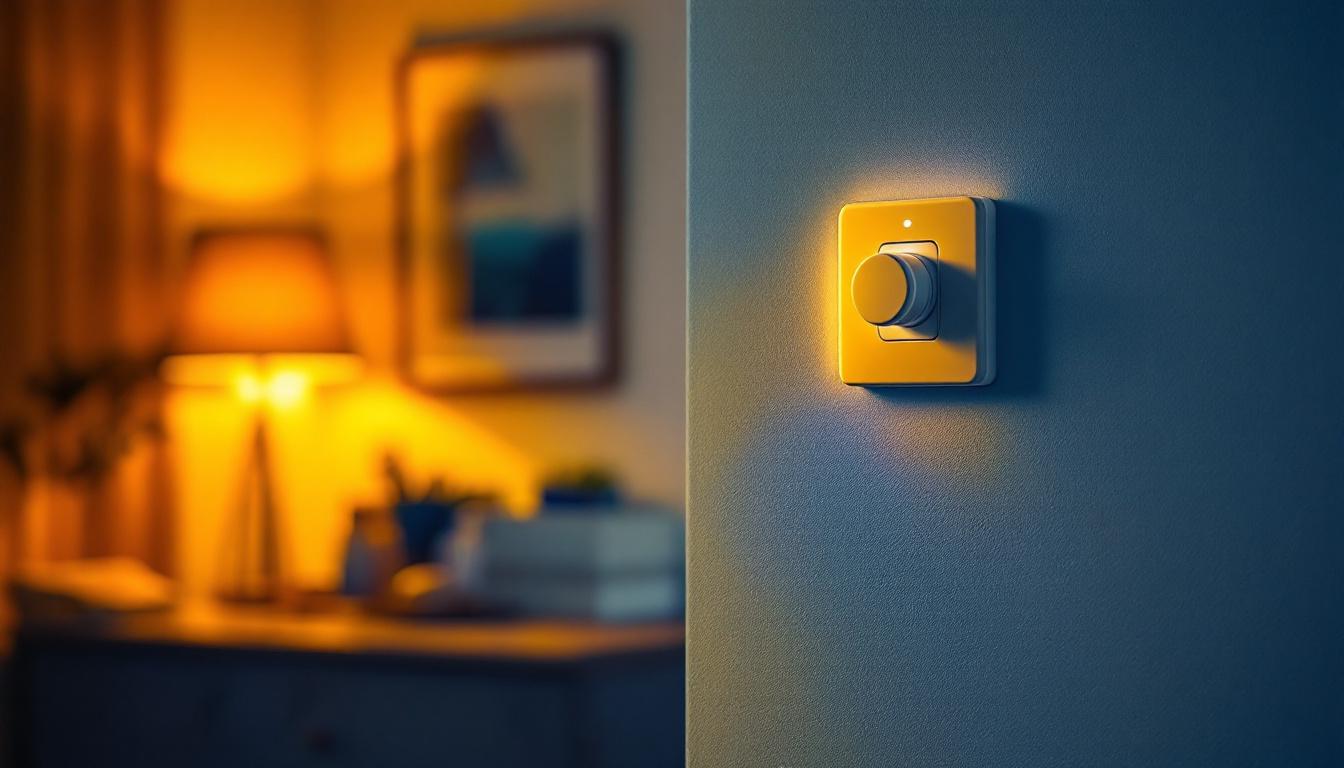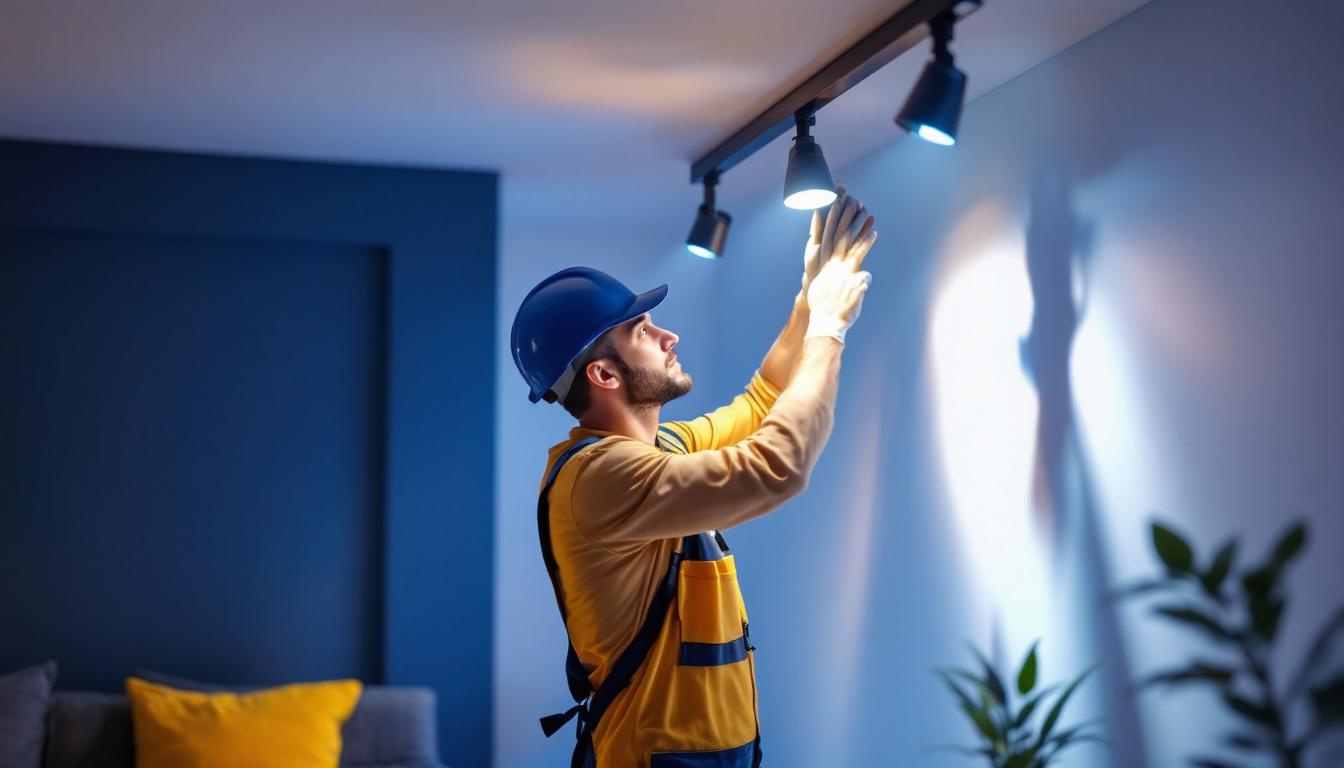
The world of lighting design is constantly evolving, and with it comes the need for innovative solutions that enhance both functionality and aesthetics. One such solution that has gained significant traction is the indoor motion sensor light switch. This technology not only improves energy efficiency but also offers a level of convenience that traditional switches simply cannot match. For lighting contractors, understanding the benefits and applications of these devices is essential for delivering successful lighting projects.
Indoor motion sensor light switches are devices that automatically turn lights on or off based on the presence of movement within a designated area. They utilize infrared, ultrasonic, or dual technology to detect motion, making them an ideal choice for various indoor environments. By integrating these switches into lighting designs, contractors can create spaces that are not only well-lit but also energy-efficient. This technology is particularly advantageous in high-traffic areas such as hallways, staircases, and bathrooms, where lights can be activated as soon as someone enters, providing immediate illumination without the need for manual operation.
The technology behind motion sensor light switches is fascinating. Infrared sensors detect heat emitted by objects, while ultrasonic sensors send out sound waves and measure their reflection. Dual technology combines both methods for enhanced accuracy. This means that the switch can differentiate between human movement and other disturbances, reducing the likelihood of false triggers. The sensitivity of these sensors can often be adjusted, allowing users to customize their operation based on the specific environment, whether it be a quiet office or a bustling kitchen.
When a person enters the sensor’s range, the switch activates the connected lights. After a predetermined period of inactivity, the lights automatically turn off, conserving energy and extending the lifespan of the bulbs. This functionality is particularly beneficial in spaces where lights are often left on unnecessarily. Additionally, many modern motion sensors come equipped with daylight harvesting features, which can adjust the brightness of the lights based on the amount of natural light available, further enhancing energy savings and creating a more comfortable atmosphere.
There are several types of indoor motion sensor light switches available, each designed for specific applications. The most common types include:
In addition to these common types, there are also specialized sensors designed for unique environments. For instance, some models are tailored for use in commercial settings, where they can handle larger areas and more complex lighting systems. Others are designed for specific applications, such as those that operate in low-light conditions or are resistant to humidity, making them perfect for bathrooms or laundry rooms. Understanding the specific needs of your space can help in selecting the most appropriate motion sensor light switch, ensuring optimal performance and energy efficiency.
Incorporating indoor motion sensor light switches into lighting projects offers numerous advantages. These benefits extend beyond mere convenience, impacting energy consumption, safety, and user experience.
One of the most significant benefits of motion sensor light switches is their ability to enhance energy efficiency. By ensuring that lights are only on when needed, these devices can significantly reduce electricity consumption. This is particularly important in commercial settings, where lighting can account for a substantial portion of energy costs.
Moreover, as energy efficiency becomes a priority for many clients, offering motion sensor switches can set a contractor apart from competitors. Clients are increasingly looking for sustainable solutions, and integrating these switches into lighting designs can help meet their expectations. The long-term savings on utility bills can also be a compelling argument for clients, as they can see a return on investment over time, making the initial costs more palatable.
Motion sensor light switches can also enhance safety and security in indoor environments. By automatically illuminating spaces when someone enters, these switches help prevent accidents caused by poor visibility. This is particularly important in areas such as stairwells, hallways, and bathrooms.
Additionally, the presence of motion-activated lights can deter potential intruders, as unexpected lighting can signal occupancy. This added layer of security is a selling point for residential and commercial clients alike. Furthermore, in homes with elderly residents or small children, motion sensor lights can provide peace of mind, ensuring that loved ones can navigate their surroundings safely without the need to fumble for switches in the dark.
Beyond safety, these devices can also contribute to a more welcoming atmosphere. For instance, in retail environments, motion sensor lights can create a bright and inviting space that responds to customer movement, enhancing the shopping experience. By automatically adjusting the lighting based on foot traffic, businesses can create a dynamic ambiance that encourages customers to linger longer, potentially increasing sales and customer satisfaction.
Indoor motion sensor light switches are versatile and can be applied in various settings. Understanding the specific needs of each environment is crucial for successful implementation.
In residential settings, motion sensor light switches can be installed in areas such as entryways, garages, and bathrooms. Homeowners appreciate the convenience of having lights turn on automatically when they enter a room, especially when their hands are full.
Additionally, these switches can be programmed to work with smart home systems, allowing homeowners to control their lighting remotely or set schedules. This integration enhances the overall user experience and adds a modern touch to home lighting systems.
For commercial spaces, motion sensor light switches can be particularly beneficial in offices, conference rooms, and restrooms. In offices, for instance, lights can automatically turn off in unoccupied areas, contributing to significant energy savings.
In conference rooms, these switches can enhance the user experience by ensuring that lights are activated when meetings begin and turned off when the room is empty. This not only saves energy but also ensures that the space is always well-lit when needed.
While the benefits of indoor motion sensor light switches are clear, proper installation is crucial for optimal performance. Several factors should be considered during the installation process to ensure that the switches function effectively.
Choosing the right location for motion sensors is essential. The sensors should be placed in areas where they can effectively detect movement without obstructions. For example, placing a sensor in a corner may limit its coverage, while a central location can maximize its effectiveness.
Additionally, understanding the coverage area of each sensor type is important. PIR sensors work best in open spaces, while ultrasonic sensors can detect movement through obstacles. Selecting the appropriate sensor for the specific environment will enhance performance.
Most motion sensor light switches come with adjustable sensitivity and timing settings. Contractors should take the time to configure these settings based on the specific needs of the space. For instance, in high-traffic areas, a higher sensitivity setting may be necessary, while in less frequented spaces, a lower setting may suffice.
Timing settings also play a crucial role. Depending on the environment, the duration before the lights turn off can be adjusted to prevent unnecessary energy waste while ensuring that lights remain on long enough for users to navigate the space comfortably.
Despite their advantages, indoor motion sensor light switches can present challenges. Being aware of these potential issues allows contractors to proactively address them during installation.
One common challenge with motion sensor switches is false triggers, which can occur due to pets, moving objects, or even drafts. To mitigate this, selecting the right type of sensor is crucial. For example, using dual technology sensors can reduce the likelihood of false triggers, as they require confirmation from both infrared and ultrasonic signals.
Additionally, adjusting the sensitivity settings can help minimize false activations. Contractors should educate clients on the importance of proper placement and settings to ensure optimal performance.
Another challenge may arise when integrating motion sensor light switches with existing lighting systems. Not all switches are compatible with every type of bulb or fixture. It is essential to verify compatibility before installation to avoid issues with flickering lights or inadequate performance.
Contractors should stay informed about the latest advancements in lighting technology and ensure that they select motion sensor switches that are designed to work seamlessly with various types of lighting systems.
Indoor motion sensor light switches are an invaluable addition to any lighting project. Their ability to enhance energy efficiency, improve safety, and provide convenience makes them a must-have for lighting contractors looking to deliver exceptional results. By understanding the technology, applications, and installation considerations, contractors can effectively incorporate these devices into their projects, meeting the evolving needs of clients.
As the demand for smart and efficient lighting solutions continues to grow, embracing indoor motion sensor light switches will not only elevate the quality of lighting designs but also position contractors as leaders in the industry. The future of lighting is here, and it is time to harness the potential of motion sensor technology for successful lighting projects.
Ready to take your lighting projects to the next level? LumenWholesale is here to support you with the finest spec-grade lighting products at unbeatable wholesale prices. Say goodbye to middleman markups and hello to a vast selection of reliable, high-performance lighting solutions that meet the highest industry standards. With the convenience of free shipping on bulk orders, you can secure premium lighting for your projects at the best value — no hidden fees, no compromises. Elevate your lighting designs with the efficiency and convenience of motion sensor technology. Wholesale Lighting at the Best Value is just a click away. Experience the LumenWholesale difference today!

Discover essential tips for updating track lighting as a lighting contractor.

Discover expert tips and insights for lighting contractors on transitioning from CFL to LED lighting solutions.

Discover innovative hacks for smart lighting contractors to enhance outdoor spaces with solar-powered sconces.

Explore essential insights for lighting contractors on dusk to dawn lights, including installation tips, energy efficiency benefits, and the latest technological advancements to enhance outdoor illumination projects..